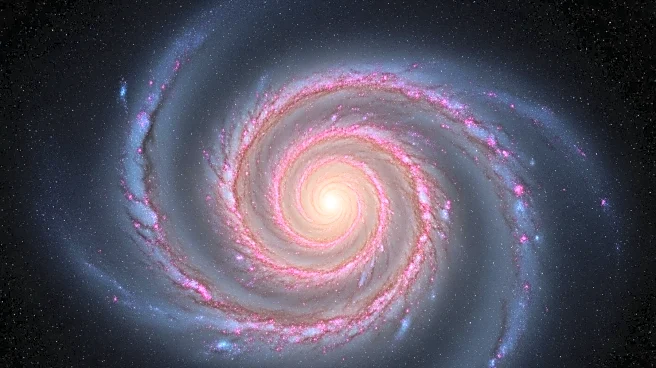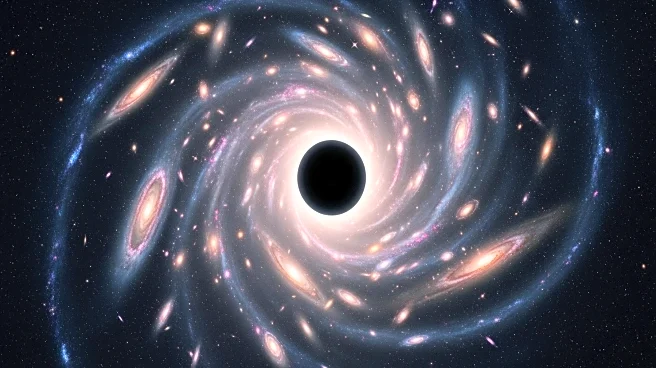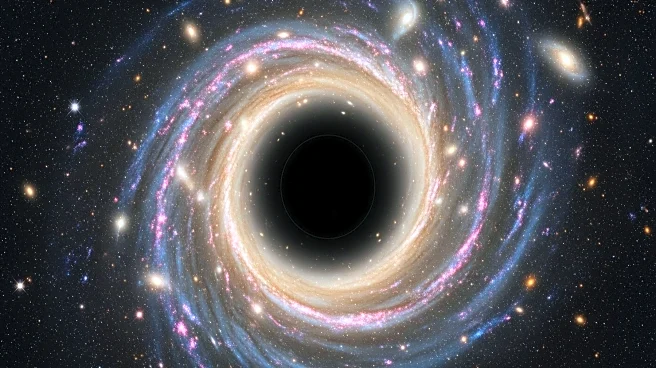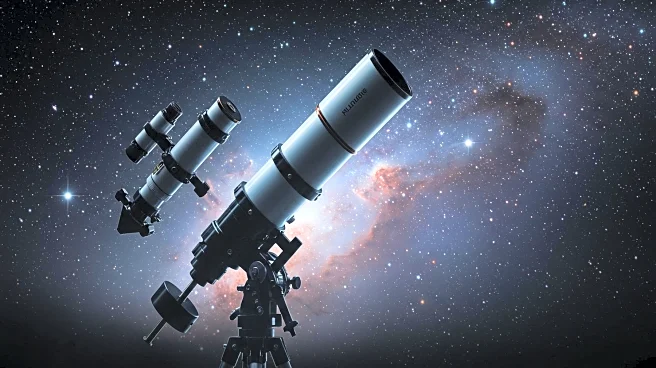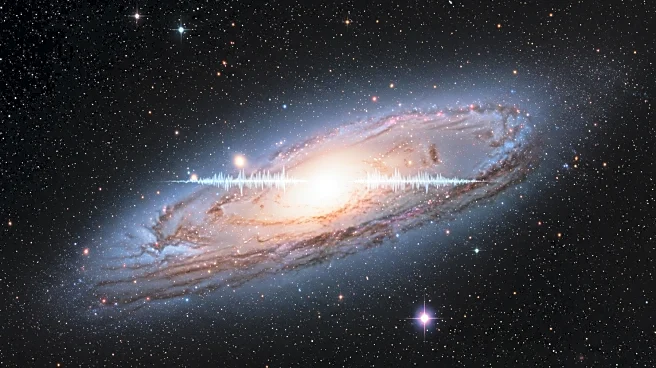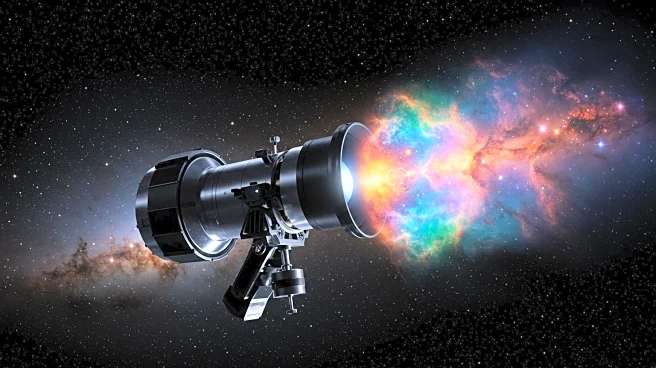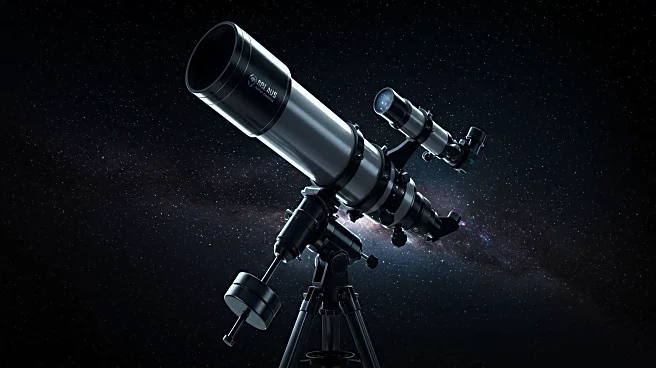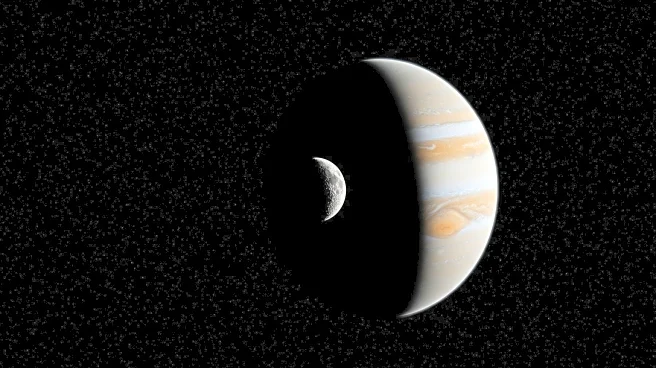What's Happening?
A study using the James Webb Space Telescope has discovered that approximately 60% of observed galaxies rotate clockwise, challenging the previous belief of random galactic rotations. This finding has led to a hypothesis that the universe might be encapsulated within a massive black hole. The uniformity in galactic rotation suggests a potential cosmic order, prompting scientists to reconsider the dynamics governing the universe. The study, which analyzed 263 ancient galaxies, proposes that the observed rotational pattern could be influenced by the gravitational pull of a black hole, potentially redefining our understanding of cosmology.
Why It's Important?
The implications of this discovery are profound, as it challenges existing cosmological models and suggests a more structured universe than previously imagined. If the universe is indeed within a black hole, it would necessitate a reevaluation of fundamental cosmic principles, such as time and matter distribution. This could lead to new theories about the universe's formation, structure, and ultimate fate. The study also highlights the importance of precise astronomical measurements, as observational biases could impact the interpretation of galactic behavior. The potential for a universe governed by black hole dynamics opens new avenues for scientific exploration and understanding.
What's Next?
Further investigation is required to validate the black hole hypothesis and explore alternative explanations for the observed galactic rotations. Researchers will likely focus on addressing potential observational biases and refining their techniques to ensure the accuracy of future studies. The findings underscore the necessity of ongoing exploration and observation of the cosmos, as enhanced capabilities of telescopes like the JWST could lead to transformative insights into the universe's mysteries. The scientific community is urged to push the boundaries of knowledge and question the very fabric of reality as they continue to explore these cosmic enigmas.
